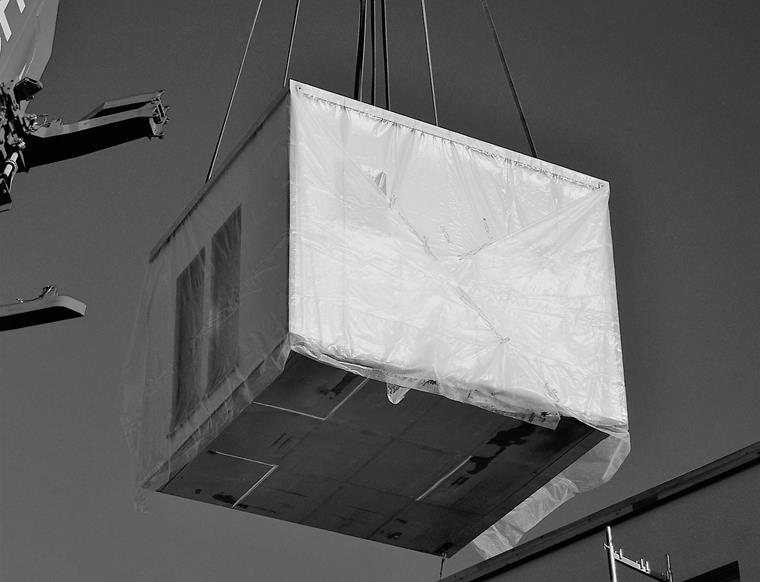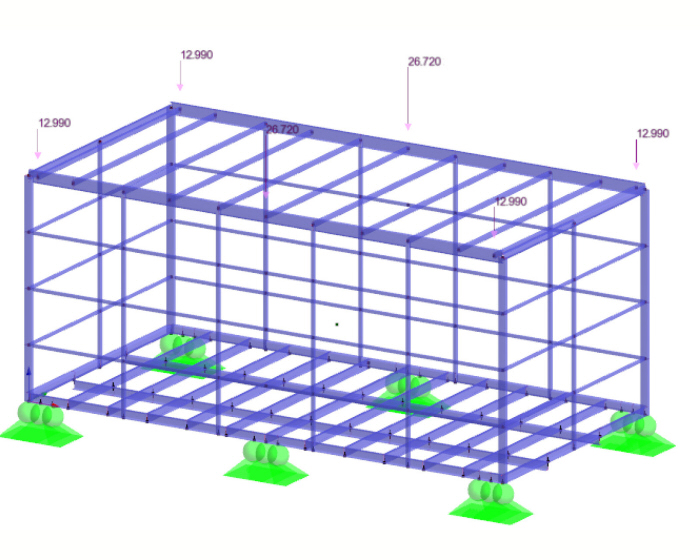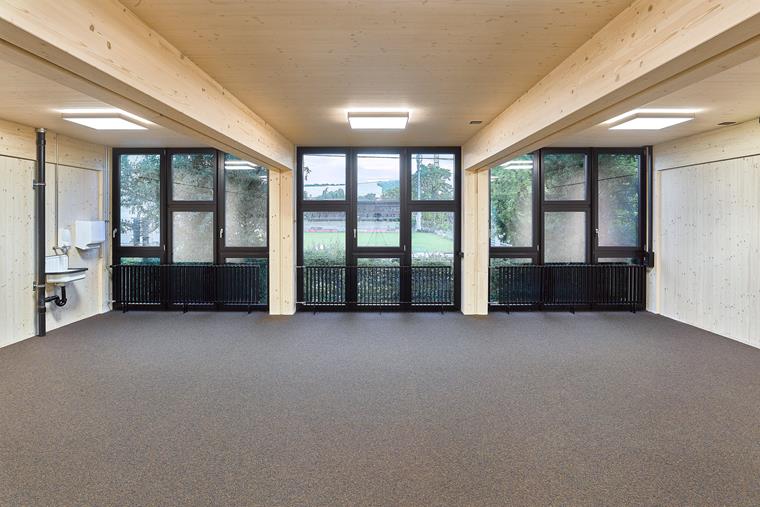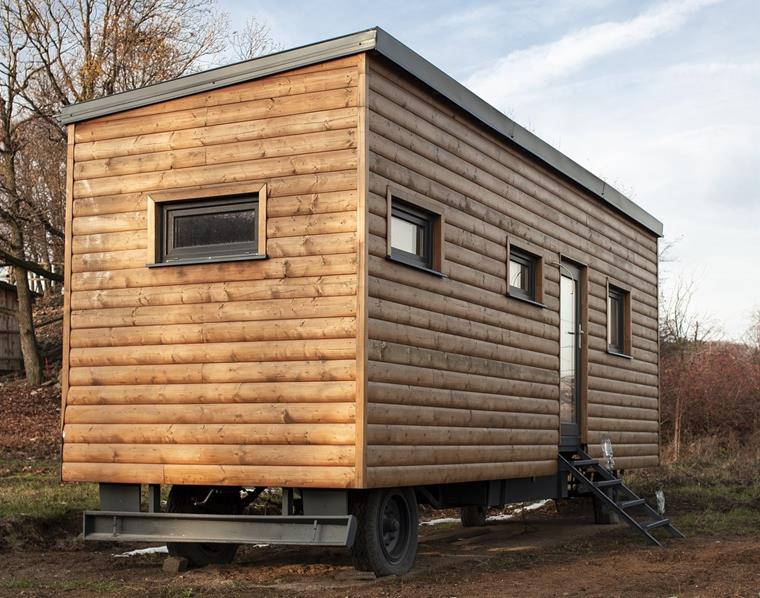Building in Blood
Our guest today, Markus Steppler, is a second-generation structural engineer, and he studied civil engineering in Aachen, Germany. He has two children, is married, and has been very interested in modern construction methods since he was in college. More than 15 years ago, he got into modular buildings, and 10 years ago, he founded his own engineering office for modular structures. About four years ago, he switched from steel structures to timber structures.
In general, civil engineering is not uncommon in Germany, and a rather classic subject of study. So is it rather boring, outdated, and dry? Markus is convinced that this is more a prejudice.
- "I think that construction can be very modern."
What is modular construction about?
First, let's clarify the term. Is serial construction the same as modular construction? There is actually a difference in terminology here. Serial construction can also refer to the individual elements of a room; that is, it can be carried out in 2D. In the case of modular construction, it is always a question of 3D space cells. In this case, entire rooms are prefabricated as a module.
Modular buildings grew out of the desire to make the building process faster and more efficient, starting with temporary structures. Meanwhile, the cost effect is also in the foreground. The aim is to be able to manufacture modules on an assembly line, as in the automotive industry.
There are different materials that can be used to build room modules. For example, modular steel construction has been established in Germany for many decades. Concrete modules are also possible now. The most exciting are certainly timber modules, which have been very popular on the market for about five years.
The room modules are, of course, prefabricated, first into a shell state and then progressively expanded over several stations. The degree of expansion differs, depending on the manufacturer. Some have all the coverings, tiles, bathrooms, wet rooms, and sanitary fixtures installed directly. Others only finish the rooms on site.
In the end, it's simple: Instead of one construction site, there are two that run parallel to each other and are joined together at the end. This saves a good 50% of the construction time, compared to conventional construction.
Simply Different Modular Construction
Again, the comparison with a car is suitable. A 3D model is planned in advance. In conventional construction, planning often takes place throughout the construction process, which is, obviously, not possible in the case of modular construction. Markus sums it up quite well:
- "Then, I press a button and factory production begins."
Here, it is necessary to solve certain planning details by the start of the production, which already includes every single socket. Afterwards, a digital twin can be generated for changes, which can then be used for the design.
Due to the serial construction method, modular buildings are not architectural highlights, of course, but rather functional buildings, such as daycare centers or schools. Office buildings that have to be usable quickly, or a clinical or laboratory area, are classic examples of modular buildings.
Therefore, architectural competitions cannot be won with a modular building, but this construction method is not intended for that at all. In this case, opinions differ, especially among architects. One person likes to deal with this construction method; others prefer to turn to classic construction methods.
International Modular Construction in Comparison to Germany
Modular steel construction in particular is very widespread in Germany. When it comes to modular timber construction, the Netherlands or Scandinavia are more likely to have an edge. This is probably due to the fact that timber as a building material is simply a tradition in these countries.
Germany doesn't have to hide there, however. We can easily keep up in terms of the quality and size of modular buildings throughout Europe.
Living in Modular Building
Markus lives in a modular building himself, so we want to know: What is it like to live in a modular house? Above all, he appreciates the quality and accuracy, but also the construction speed. He poured the floor slab at the beginning of November and then invited his neighbors to Christmas dinner – the same year. Because after six weeks, the house was ready to move in.
Since there was no brickwork or plastering, you can simply put a cupboard in a corner and it fits perfectly. Such precision can only be achieved by fabrication. Markus is currently planning his next project on a neighboring property. There are going to be two or three apartments built as a modular timber structure.
Limits of Modular Construction
The main limit is economic efficiency, especially in the case of several stories. In this case, access cores in concrete are required, so there are two parallel construction sites. Everything has to be fully planned to be able to do something like this, and it takes a great deal of effort.
Fire protection is already solved by double walls and double ceilings. However, it is exactly this amount of material that is included in the design, of course. This is not necessarily suitable for every construction project. Furthermore, it is necessary to decide very early in the project which material and construction method will be used. The effects on structural engineering and building services are important here. Of course, the floor plan also has to fit, despite the high material thickness.
Markus also points out that the modules must be transported to the construction site. A height and a floor height are always subject to certain transport restrictions. The transport should also be effective, as the costs may eventually change considerably, depending on the width and height. The easiest way to transport the modules, for example, is that do not exceed a width of 2.5 meters. When it comes to residential buildings, building owners often want other dimensions, which is why these modules are more suitable for accommodation, such as hotels or clinics.
Moreover, there is a long phase of preliminary design. All of this is rather a deterrent to the construction of an ordinary apartment or a house. Element construction in 2D often makes more sense here.
Modular Buildings for More Sustainability?
Modular structures are reusable and thus sustainable, as was known even 50 years ago. However, the focus on sustainability in construction has been growing recently. The buildings can be used again in terms of the circular economy, which was a clear advantage, especially for hospitals. Markus talks about ward houses that have been used in five different locations for several years. We are impressed: You can hardly build more sustainably!
Dismantling is another key word that he explains to us. Modular timber construction, in particular, has an advantage in terms of CO2 balance in the first phase of construction. Modular steel construction does not have to hide either. He is only a bit skeptical about modular concrete construction. Timber in conjunction with steel is also suitable as a hybrid structure; for example, in element construction.
What comes after construction? The operation of a modular building is not necessarily more environmentally friendly than conventional structures. Insulation, facility technology, and so on, are eventually installed in the same way and are decisive here.
Modular Buildings and Future of Construction
When asked about the future of construction, Markus explains that something definitely needs to change, especially with regard to the climatic effects. Sustainability is the keyword here. He assumes that in the future, more work will be done on existing buildings than on new ones. If a new building is built, it will be necessary to use regenerative, more CO2-neutral or circular materials.
The term Construction 4.0 is already widespread. Germany has apparently skipped Constuction 3.0. The prefabrication, for example, of timber structures, does not work without digitized planning. BIM already provides a good solution. With regard to digitization, Markus sees the future as more industrialized; that is, Construction 3.0.
Apart from structural engineering, there is also the human side of the construction industry. After all, you should enjoy the construction. Here, Markus refers to his experience with structural timber projects in the Netherlands. There, all those involved work together very early on in so-called construction teams. They carry out the project together, from planning to execution. As is often the case in Germany, there is no need to plan twice. This saves not only time, but also the nerves of everyone involved.
What is your favorite building?
Of course, we also ask Markus this question at the end. He has an answer ready for us immediately.
- "My favorite modular construction project is located in the Netherlands. It is a timber module, the Hotel Jakarta in Amsterdam, a really cool project."
He himself is currently busy planning "The cradle" in Düsseldorf. This is a project with a circular approach. Here, dismantling is already being considered. There are dismantling plans and redemption obligations – really exciting, we think. Thank you for visiting us!




